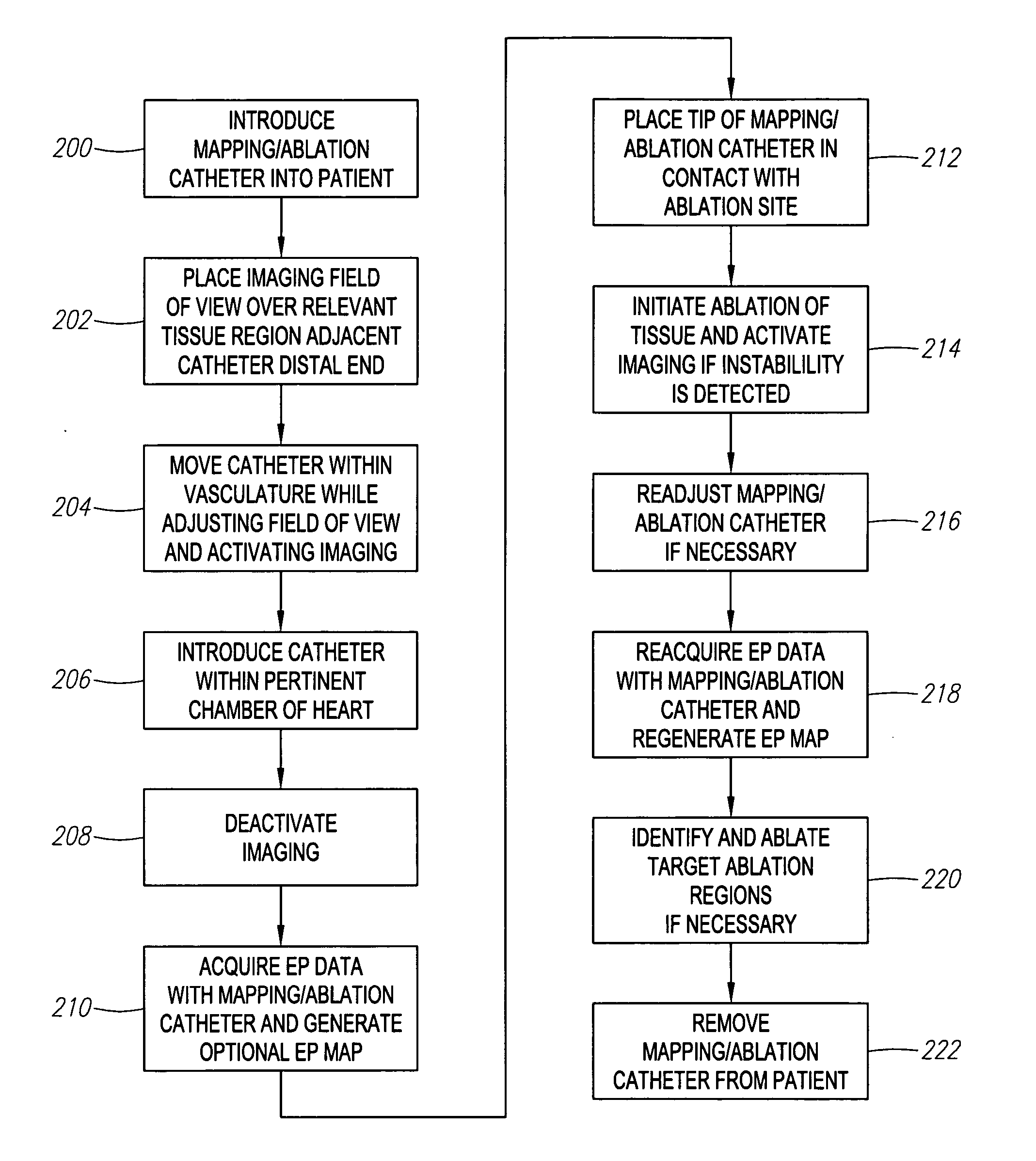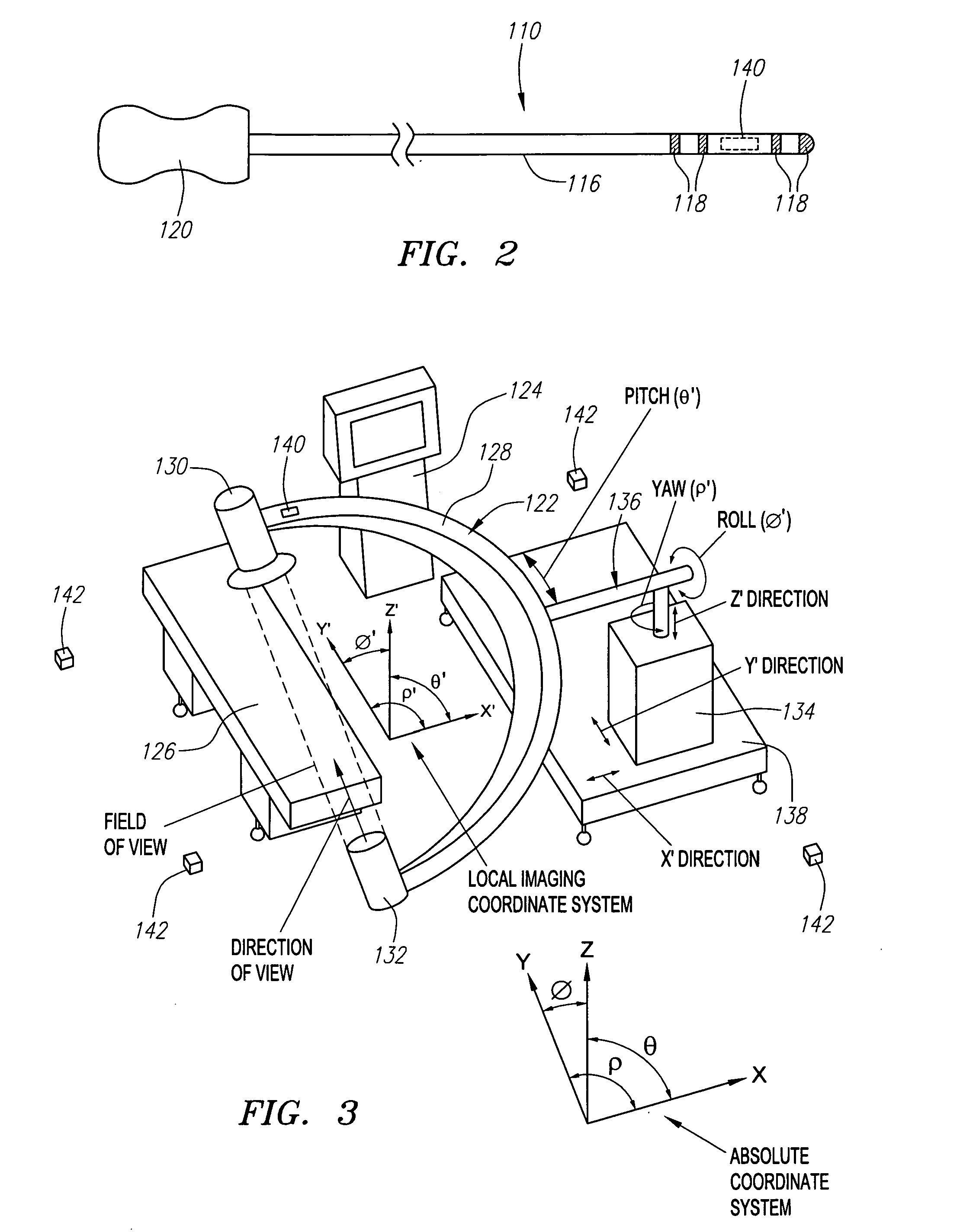Automated manipulation of imaging device field of view based on tracked medical device position
a technology of imaging device and tracking position, which is applied in the direction of catheters, applications, diagnostic recording/measuring, etc., can solve the problems of difficult for physicians to visualize anatomy features as a reference for navigation, limited use of fluoroscopy, and difficulty in locating catheter features, etc., to facilitate tissue imaging, facilitate tissue imaging, and reduce radiation exposure
- Summary
- Abstract
- Description
- Claims
- Application Information
AI Technical Summary
Benefits of technology
Problems solved by technology
Method used
Image
Examples
Embodiment Construction
[0033] Referring to FIG. 1, an exemplary medical navigation system 100 constructed in accordance with the present inventions will be described. The navigation system 100 is particularly suited for intravascularly navigating catheters used to perform intracardiac electrophysiology procedures, but can be used for navigating other catheters, such as angiograph and angioplasty catheters, as well as other medical devices, within a patient's body, including non-vascular medical devices.
[0034] The medical system 100 generally comprises (1) a mapping / ablation subsystem 102 for mapping and ablating tissue within the heart; (2) an imaging subsystem 104 for generating medical images of select regions of the patient's body; (3) a tracking subsystem 106 for tracking movable objects, such as catheters and the imaging components of the imaging subsystem 104; (4) an imager positioning subsystem 108 for mechanically manipulating the imaging subsystem 104 based on tracking information acquired from ...
PUM
 Login to View More
Login to View More Abstract
Description
Claims
Application Information
 Login to View More
Login to View More - R&D
- Intellectual Property
- Life Sciences
- Materials
- Tech Scout
- Unparalleled Data Quality
- Higher Quality Content
- 60% Fewer Hallucinations
Browse by: Latest US Patents, China's latest patents, Technical Efficacy Thesaurus, Application Domain, Technology Topic, Popular Technical Reports.
© 2025 PatSnap. All rights reserved.Legal|Privacy policy|Modern Slavery Act Transparency Statement|Sitemap|About US| Contact US: help@patsnap.com



